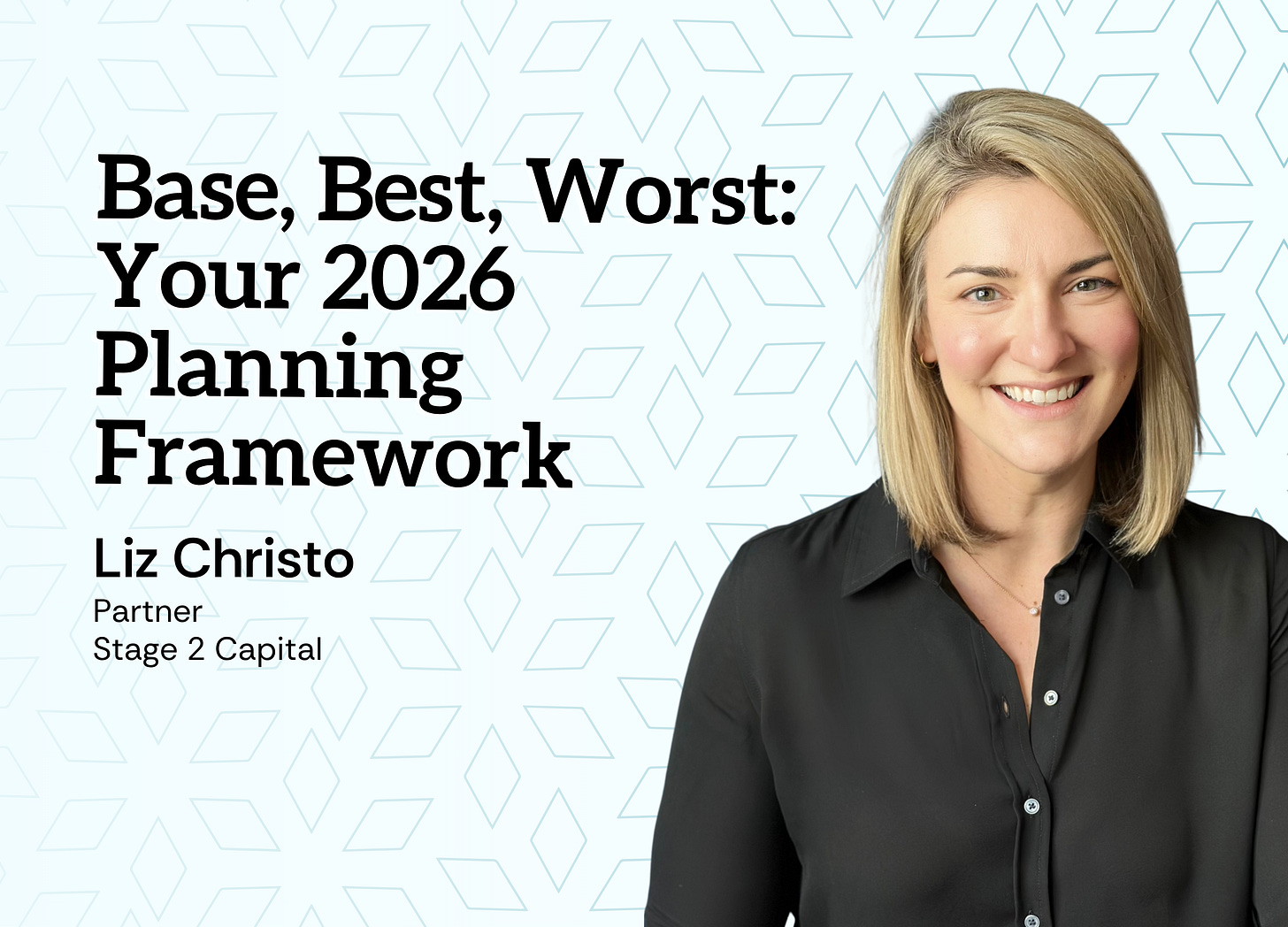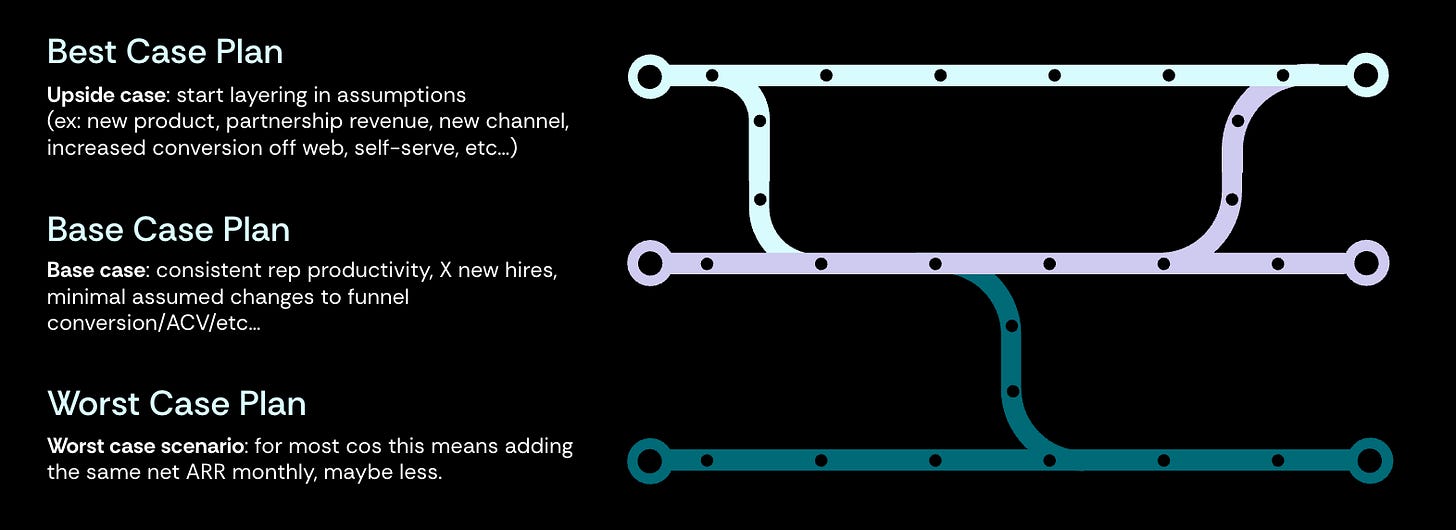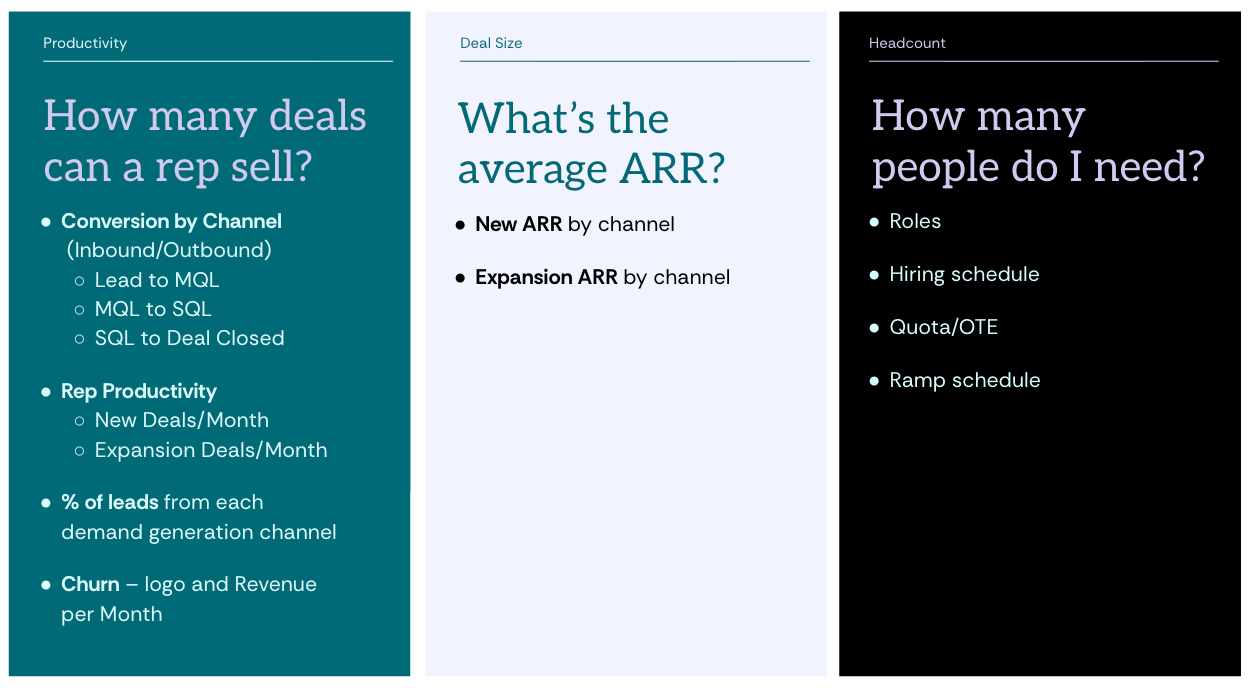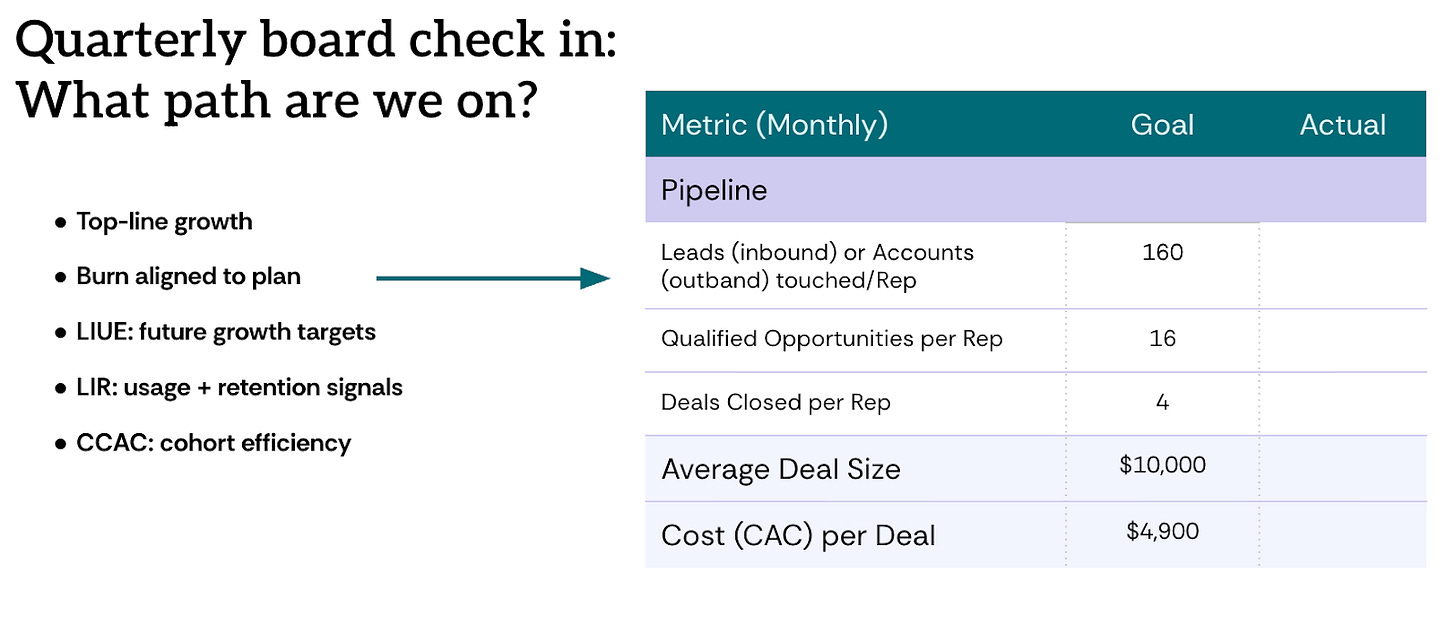Base, Best, Worst: Your 2026 Planning Framework
A tactical guide to building aligned annual plans with clear levers for growth, or course correction.
DEAR STAGE 2: We’re kicking off our annual planning process, and it’s the first time we have done this with a VP leadership team in place. Any advice on how we should approach this for 2026 to ensure we have a fully aligned team? ~PLANNING TOGETHER
DEAR PLANNING TOGETHER: Q3 is wrapped, Q4 is underway (where did the summer go??) and we are squarely in 2026 planning season. The theme of this year’s planning season? Realism. Whether you’re gunning for a breakout growth year or or aiming for profitability, your 2026 plan needs to reflect reality using real historical data. And most importantly, the team that will execute on the plan needs to have a say in building it and be 100% aligned as you kick off the new year. Here’s how to make that happen.
1. Throw Out the One-Plan Mentality
Most founders start with a top-down number: “We need to hit $10M ARR before we can raise again” or “We need to 5x this year.” That number usually comes from the boardroom and trickles down with very little operational grounding. The number is handed to finance to build a model and…done.
Not quite. It’s often loaded with unrealistic assumptions: reps ramp in 30 days, conversion improves every month, CAC drops…magically.
What to do instead: Build three plans
Base Case: Built off historical data + realistic hiring assumptions.
Best Case: Your upside scenario that considers partnerships scaling, new products, revamped pricing, etc…
Worst Case: Your downside scenario that accounts for rising churn, funding delays, turnover and/or sales misses.
Critically, each plan has a prescribed growth target and burn rate. They should operate in parallel throughout the year so you can see where you stand and how you are pacing at any given point in time. If you’re pacing to Best Case, unlock budget. If you’re under Base, cut spend.
2. Gather your data and build the Base Case
Stage 2 Capital has a planning model template that we use with our portfolio. If you’re not sure where to start, download this template, pull together the last 3-6 months of historical data and load it into this template along with your hiring plan → this is your Base Case!
Here’s a quick overview of the data you need to get started:
When you build from this data, you get a much tighter grip on what the team can actually deliver, and where you might want to place some strategic bets.
3. Bring the entire GTM leadership team together to pressure test the plan
With your VP layer in place, you now have the horsepower to pressure-test assumptions before they make it into the final model. We recommend involving the full GTM org. Bring Sales, Marketing, CS, and RevOps leadership together and get them in the same room to agree to the plan.
Scroll out to July, for example, and pressure test the assumptions together. Can marketing produce X leads 6 mos from now? Can the cost per lead hold constant at that volume?
What about sales? Is it realistic for a rep to close 1 more deal per month by mid year? Or grow ACV by 10%?
When you are evaluating, watch out for the common mistakes:
Start with your actual historical data
Don’t hire AEs ahead of demand
Watch out for stacked assumptions
Include realistic ramp time (be honest!).
4. Plan for What Can Go Wrong (and Right)
Once the Base Case is set, it’s time to go to extremes:
Downside Planning: What happens if funding falls through? If two AEs leave? If your main channel underperforms? Map the trigger points and define the pre-agreed actions: spending freezes, hiring pauses, maybe even a RIF.
Upside Planning: Where will you invest if things go well? This is the fun part. Maybe it’s hiring additional engineers to accelerate a product launch, or scaling a new GTM motion, or investing behind a partnership. Take the time to think about the investments you will make to grow faster now to ensure you are ready to respond quickly mid year.
5. Review progress quarterly with the board
A great planning process creates clarity and alignment from the exec team to the board. Once you’ve locked in on your 3 plans:
Only one plan is shared with the company. Your team needs one target to rally around: one revenue goal, one burn number. Any variable comp or bonuses should be tied to attainment of this plan.
Three scenarios reviewed at the board level quarterly. Best case, base case, and worst case should all live in your model, and the board should be looped in on all three. You’re proactively showing how the business will adapt under different conditions.
Quarterly check-ins to stay aligned. Every quarter, review actuals vs. plan. Are you pacing ahead? Falling behind? These reviews make sure you’re not running on old assumptions or overspending without results.
Decide actions upfront. Before the year starts, define what will trigger change. Example: “If we hit X revenue in Q2, we unlock Y hires.” Or, “If we miss A conversion rate for 2 quarters, we cut B from the budget.” This alignment on actions removes the emotion from tough decisions that can come midyear.
And with that…one more plug to go grab the template and get started.
Until next week!






